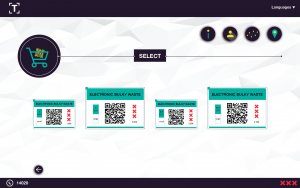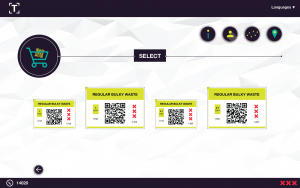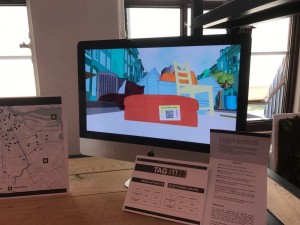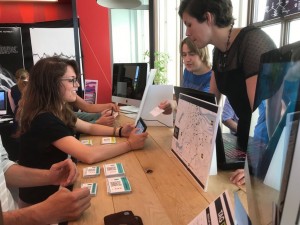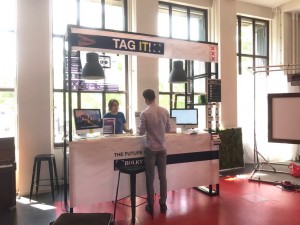‘Tag It!’… The Future of Bulky Waste
During the last two sprints we further developed our new bulky waste system, called ‘Tag It!’.
How does it work?
In the new waste system ‘Tag It’ bulky waste is tagged with geolocated stickers. The stickers vary on prices based on three variables: time priority (high or low time priority), size (small or large) and type of waste (regular/other or electronic waste). The stickers contain a QR code, which needs to be scanned to activate. To activate the stickers an application was developed. This application is also necessary to select a time frame to know when one can put their bulky waste out. In addition one can create a profile, check which sticker one need, see how one’s district is performing, use a responsive map to see where one can go with the bulky waste and order the stickers online. Besides online, stickers can be bought at any selling points spread throughout Amsterdam.
Due the integration of geolocated software in the sticker once the stickers are scanned and an appointment is set, the municipality receives information about what kind of waste there is and where it is located. Moreover, by having different time priorities the municipality can plan the routes ahead and drive more cost-efficient when picking up the bulky waste.
The prices are kept relatively low for several reasons. In the current bulky waste system of Amsterdam, citizens do not have to pay any money to make use of the service besides the annual waste tax. Resistance and refusal is expected when the prices are initially high for the stickers. Secondly, it is important that citizens think about the costs of waste procession. By having a price for the stickers a sustainable mindset is reinforced. Finally, due the fact that it costs money the free alternative becomes more attractive: the alternative to throw bulky waste away at the waste collecting points.
At the end of each year citizens receive a tax benefit. This tax benefit is calculated per district and is based on the production of bulky waste. The more citizens use the new waste system correctly, the more tax benefits the citizens of that district earn. Community engagement is supported through the possibility to see how your district is performing at any given time. This reward system should motivate citizens to make use of the system.
The final steps
We created several games with the purpose of attracting people their attention and to start a conversation with them about our concepts. The feedback we received by talking to them about our concept was taking into consideration and when useful applied to improve our concept.
To decide on the price of the stickers we did a SWOT-analysis for the different price options. At the end we decided on a relatively low price for the stickers in order to create awareness among citizens that waste processing costs money and encouraging citizens to go to the free waste points, however while making the stickers also affordable.
On June 21st we had an expo, LabFest, here projects were presented from different organizations that collaborate with the Amsterdam Creative Industries Network (ACIN). Each project had their own stand. We decided to present our product in the form of a customer experience. We recreated a shop with our stand and wanted to represent the experience a customer has when they haven’t got a smartphone and need to ask help to the staff. The reactions we received were all positive and people thought it could actually replace the current waste system in Amsterdam.
On June 22nd we had our final presentation to the municipality. De waste department of the municipality of Amsterdam was invited to join our presentation. Our presentation had the form of a product pitch. In our presentation we talked about the process and our product, led a discussion and gave our public the chance to check out our product. Overall, the municipality was very enthusiastic about our product and they want us to continue working on it. They were talking about doing an actual pilot to test our product in reality. We were satisfied with their response to our product; are extremely proud of the end product ourselves as well. We are certain that it is only a matter of time until ‘Tag It!’ is implemented in Amsterdam and possibly other cities!




